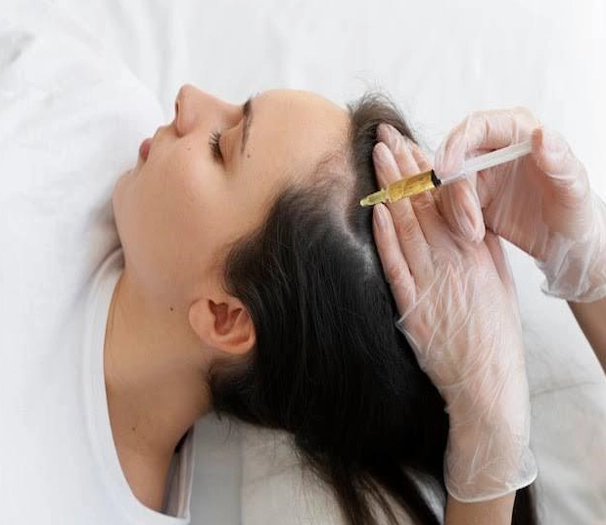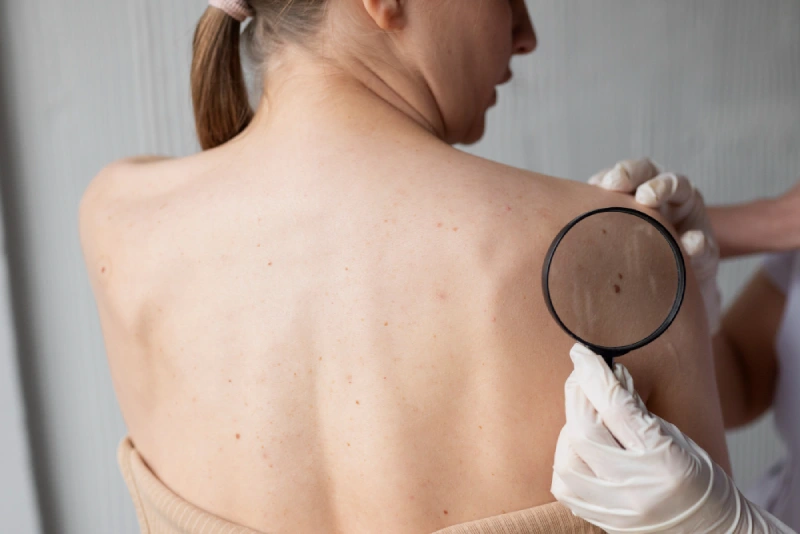What is Hair Loss?
Hair loss, at its core, is more than just a thinning crown or a receding hairline. Historically, our hair has not only been a marker of aesthetic appeal but also a protective shield for our body against environmental elements. The ripple effect of losing hair goes beyond the surface as it’s deeply mingled with our self-worth, affecting our self-esteem and, subsequently, our mental health.
Nearly 60% of men and up to 50% of women experience hair loss during their lifetimes. Factors range from genetics to lifestyle choices, stress levels, and hormonal imbalances. While hair loss might sometimes stem from natural aging or genetic factors, it can also be an early alarm bell hinting at underlying health concerns.
What Causes Hair Loss?
Normally, every individual sheds about 50-100 hair strands daily, allowing newer, healthier hair to grow from the same follicle. However, when hair shedding begins to outnumber hair growth, it results in a visible reduction in hair volume. As time progresses, these follicles lose their vigor in producing new hair, and the growing strands are thinner, weaker, and less pigmented.
Our hair shaft is an assemblage of dead cells protected with keratin fibers, sprouting from the hair bulb nestled within the follicles on our scalp. The melanin in these follicles gives our hair its distinctive color. The life of each hair strand can be classified into four distinct phases:
- Anagen Phase: Lasting between 3 to 5 years, this growth phase sees hair elongating at approximately half an inch per month.
- Catagen Phase: Spanning roughly 10 days, the detachment phase is where the follicle disconnects from the scalp’s blood vessels. Consequently, the hair doesn’t receive the nutrients it needs and eventually falls out.
- Telogen: Known as the resting phase, the hair strand no longer connects to its nutrient source but isn’t ready to shed yet.
- Exogen: The shedding phase, after which the follicle rests for around three months before initiating the growth of a new hair.
Every strand on our head controls its unique timeline, ensuring we don’t lose all our hair simultaneously. The core issue of hair loss is frequently tethered to disruptions in the anagen phase. A shortened growth period caused by insufficient nutrients or sensitivity to hormones leads hair to enter the shedding phase prematurely. Weakened follicles often struggle to produce robust new hairs, exacerbating the problem.
Forms of Hair Loss
Hair loss is often brushed off as a mere cosmetic issue, but it takes on many shapes and forms. Let’s break it down into the most common types:
- Androgenetic Alopecia: Have you ever noticed how some people have hair thinning prominently at the top of their head or temples? This type is the main culprit. Blame it on the testosterone metabolites. The testosterone in the scalp turns into dihydrotestosterone (DHT), which shrinks hair follicles and hampers hair growth, resulting in bald patches. The sides and back of the head mostly remain unaffected because of lower DHT levels there. This pattern looks like a horseshoe, often termed “pattern baldness.” Genetics also plays its role, leading some to call it “Hereditary-Pattern Baldness.”
- Telogen Effluvium: Rank it as the second most usual hair loss suspect. Imagine your hair follicles deciding to take a prolonged nap, resulting in less hair growth. This happens after major shocks like diseases, surgeries, emotional stress, certain medications, or even childbirth!
- Alopecia Areata: it’s more like a body getting its wires crossed. The immune system mistakenly targets hair follicles as threats, creating small round patches without hair.
- Alopecia Totalis: it’s a more intense version of Alopecia Areata. In this, a person might lose all the hair on his/her scalp or even your entire body.
- Cicatricial Alopecia: Sometimes, the skin becomes inflamed, leading to scarring and red patches that cause rapid hair loss.
- Traction Alopecia: it happens because of tight ponytails and braiding practices that are not follicle-friendly. Over-styling can strain the hair roots, leading to hair loss.
- Hypothyroidism: If your thyroid gland is underactive, it might not produce enough hormones. This impacts the nutrient production of proteins, leading to hair loss.
Getting a diagnosis of the form of hair loss you’re experiencing is the first step toward effective treatment. Our integrative dermatologists aim to first diagnose the hair loss type in order to recommend the most effective hair loss solution to our patients.
Integrative Treatment for Hair Loss By Nature of Skin Dermatology
Hair loss isn’t a one-dimensional issue. The culprits are many, from genetics, hormones, and environmental factors to medications and dietary habits. Our holistic dermatologists understand this intricacy. Therefore, the treatment we do isn’t linear but multimodal.
We recommend integrating conventional and nature-made treatments for best results. Vital vitamins and trace minerals play their part in the hair follicle cycle, ensuring balance and acting as enzyme cofactors, hormones, and more. Moreover, botanical extracts regulate inflammation and manage hormone levels, notably dihydrotestosterone (DHT). Beyond mere supplements, techniques like acupuncture and massage can alleviate physiological and emotional stressors that may exacerbate hair loss.
Platelet Rich Plasma
Platelet Rich Plasma (PRP) is a procedure where we use your body’s natural growth factors to help grow your hair. PRP has been successful for many types of hair loss and does not cause significant side effects like traditional medications for hair loss. The procedure consists of first drawing your blood, spinning it down to collect the platelet layer, activating those platelets to release growth factors, then injecting the serum into your scalp. Additionally, adding a procedure like microneedling can be helpful for patients who want to maximize the benefits of their PRP procedure. Microneedling is a process where we use a tool to create small microchannels in the skin, into which the PRP can be applied for deeper effect. Learn more about PRP
Nutrition & Supplements
We recommend using natural products, like vitamins, minerals, herbs, and probiotics, as potential hair loss treatments. We develop a treatment plan for our patients based on their history, symptoms, type, and severity of hair loss. Here are some of the natural products we recommend as a part of our integrative treatment: amino acids, caffeine, curcumin, and pumpkin seed oil.
Mind And Body Therapies
The connection between the mind and body is significant in integrative treatment for hair loss. We sometimes recommend these mind and body therapies in our integrative approach to hair loss. Practices like acupuncture, aromatherapy or massage, hypnotherapy, and other mind body therapies may address the underlying inflammation and immune system dysregulation that could be contributing to hair loss and other systemic issues.
Discover Natural Hair Solutions with Nature of Skin Dermatology’s Expert Dermatologists
Whether you’ve been searching for a “naturopathic dermatologist near me” or an “integrative dermatologist near me,” look no further. Our holistic dermatology clinic is committed to providing patient-centered care that respects science and includes the best treatments found in nature. Ready to begin your journey towards healthier hair and a happier you?
Reach out today and let our experts guide you every step of the way.
Book A Consultation
Disclaimer: The information provided on the site is for educational purposes only, and does not substitute for professional medical advice. Consult a medical professional or healthcare provider if you are seeking medical advice, diagnoses, or treatment.



